How To Measure High Point Shoulder
In this article, we'll talk over what key body measurements are needed for clothes pattern making. You'll larn how to have these measurements, how to source measurements and trunk data, and how they relate to edifice patterns and creating grading.
What are Trunk Measurements?
Trunk measurements refer to measuring the actual person (or people) who volition article of clothing a garment. These are different from garment measurements and tin can exist taken manually or purchased from dissimilar body information services. Many body measurements are important to building a balanced, well-fitting garment. Some of these measurements are more important - nosotros'll phone call them "Key" or "Master" measurements, while others - called "secondary" measurements, are still a factor in pattern cosmos, but are less essential to the fit of the garment.
How to Accept Body Measurements.
Even if y'all are purchasing existing body data in order to create your patterns, you lot'll likely still be plumbing equipment on fit models, so it's important to know how to manually accept measurements. To start with, you'll need to make sure you lot take the right tools.
- Flexible measuring record (the longer the better - specially if working in alpine or plus sizes).
- A 2nd flexible measuring tape with hook and optics or snaps or a string or ribbon to mark the natural waist.
- A digital or concrete copy of a measurement canvass like this one to track notate the measurements.
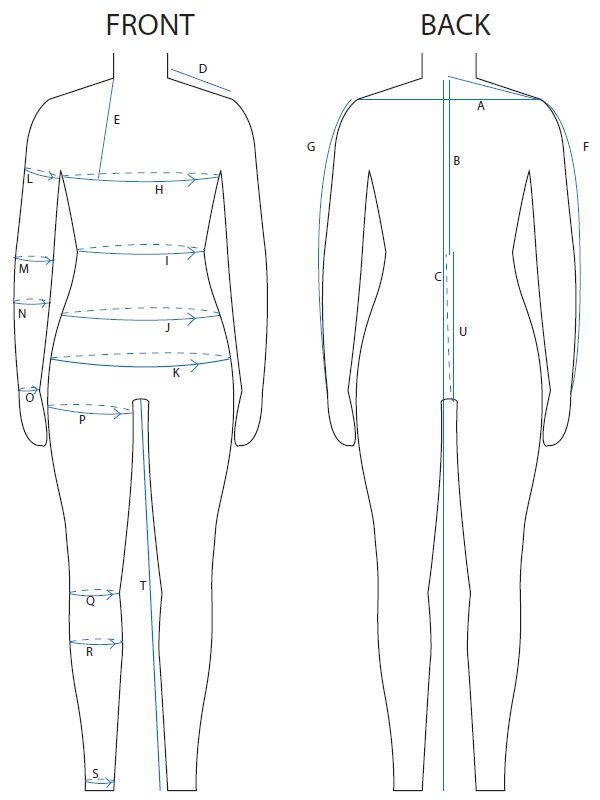

You'll also desire to make sure that the person you're measuring is either wearing well plumbing fixtures undergarments, or for the comfort of the wearer, they tin wear a low-cal, not-compressive pair of leggings and a light, non-compressive tank elevation. If you're measuring for a custom garment for a special occasion (such as a formal gown, wedding dress, tux, etc.) yous will desire to ensure your model is wearing the same shoes and undergarments they will be wearing with the garment every bit these things can affect the fit.
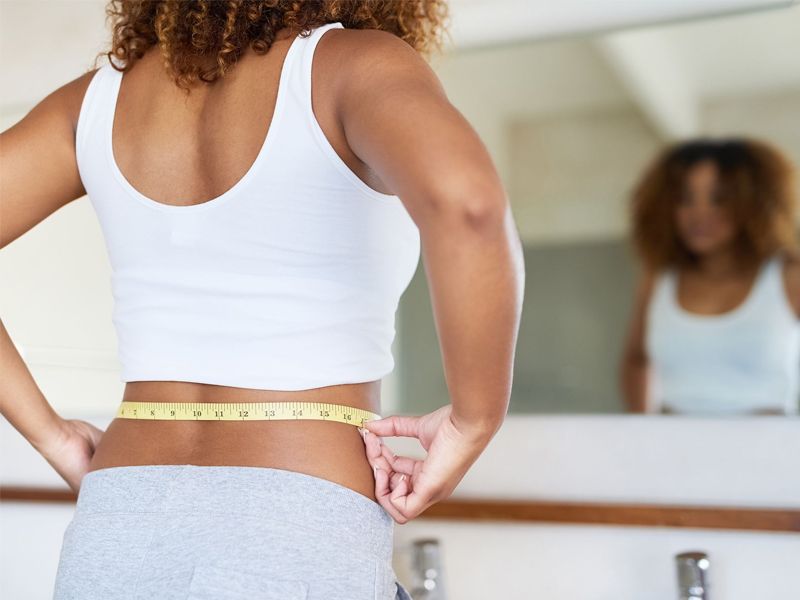
You desire your model to stand up straight, with shoulders and hips parallel with the footing and feet well-nigh shoulder width apart. For circumference measurements, you'll want the pull the measuring tape snug, then at that place is no slack, but not so tight that it distorts the body measurement past pushing or reshaping tissue.
What are the Most Important Measurements for Pattern Making?
Our cardinal measurements are dissimilar depending on the type of garment you're planning to make. Before we can talk about them, let's get some common acronyms out of the way.
CB - Center Back: refers to the center back of a garment or trunk, along the spine.
CF - Center Front: refers to the centre front of a garment or body from the hollow at the bottom of the neck direct down.
HPS - High Indicate Shoulder: refers to the elevation signal of the shoulder on either side of the neck.

Let's go through and ascertain the primal measurements and how they relate to pattern making for specific garment types. After on, we'll discuss how to take each of these measurements on the body.
Tops and Dresses
- Full Bust/Chest
- Full Hip
- Across Shoulder
- HPS to Noon
- CB Neck to Waist
- CF Cervix to Waist
- Waist to Hip Length
- Additional measurements for dresses only:
- CB neck to floor
- CF neck to flooring
Bottoms
- Full Hip
- High Hip
- Waist
- Total Rising
- Thigh
- Inseam
1-Piece Swimsuits, Rompers, and Other I Piece Garments
- Full Bosom/Breast
- Total Hip
- Across Shoulder
- HPS to Apex
- CB Neck to Waist
- CF Neck to Waist
- Waist to Hip Length
- Vertical Torso
At present that we know what key measurements we need for each product type, let's go over how to accept each of these measurements.
How to Take Central Trunk Measurements
Full Bust/Breast - this is measured at the fullest signal of the bust/chest (typically along the apex) around the total circumference of the body, parallel to the floor.
Total Hip - this is measured at the fullest point of the hip (typically at the lower ⅓ of the buttocks), parallel to the floor.
Beyond Shoulder - measured from shoulder socket to shoulder socket. Sometimes it can be helpful to have the model raise and then lower their artillery so you can feel the socket joint.
HPS to Apex - measured from HPS to apex point.
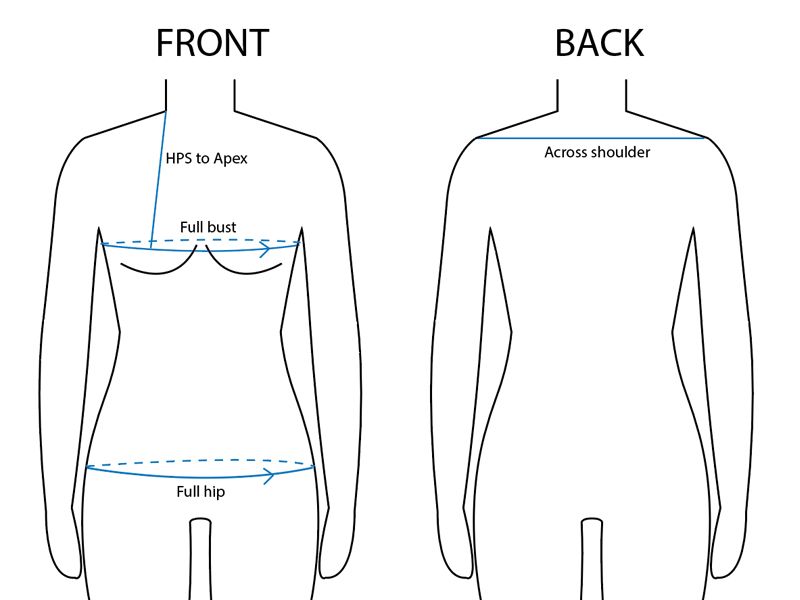
CB Cervix to Waist - measured vertically from the C7 vertebrae to the natural waist along the spine.
CF Cervix to Waist - measured vertically from the base of operations of the neck to natural waist forth the eye front of the body.
Waist to Hip length - measured along the natural side of the trunk from natural waist to full hip level.
High Hip - circumference of the trunk measured at the hip basic.
Waist - circumference measured at natural waist. It can be helpful to have the model curve to the side to marking where they bend, this is natural waist.
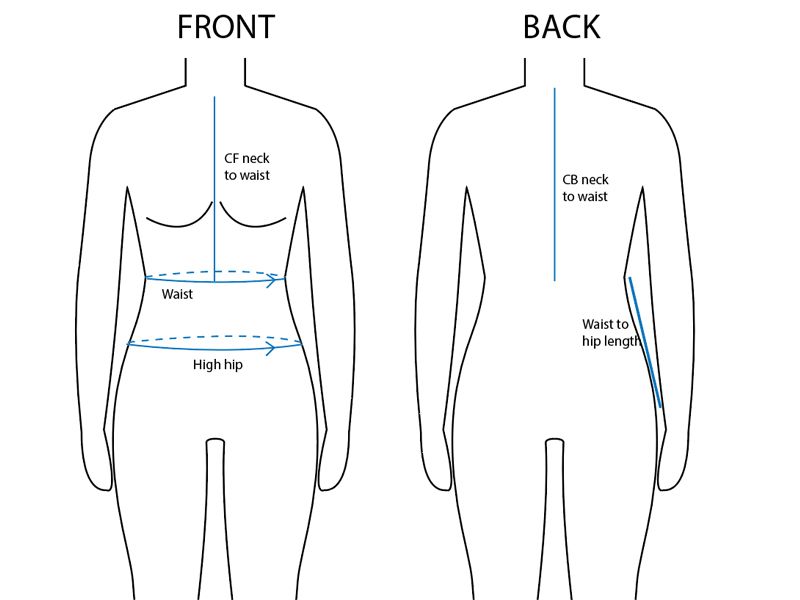
Total Rise - wrap the 2nd measuring tape or ribbon around the model at natural waist to mark information technology. Measure from the CF waist point, through the legs, and upward to the CB waist point.
Vertical Trunk - measured from HPS, forth the front of the torso, effectually the crotch, and upward the dorsum of the trunk back to HPS.
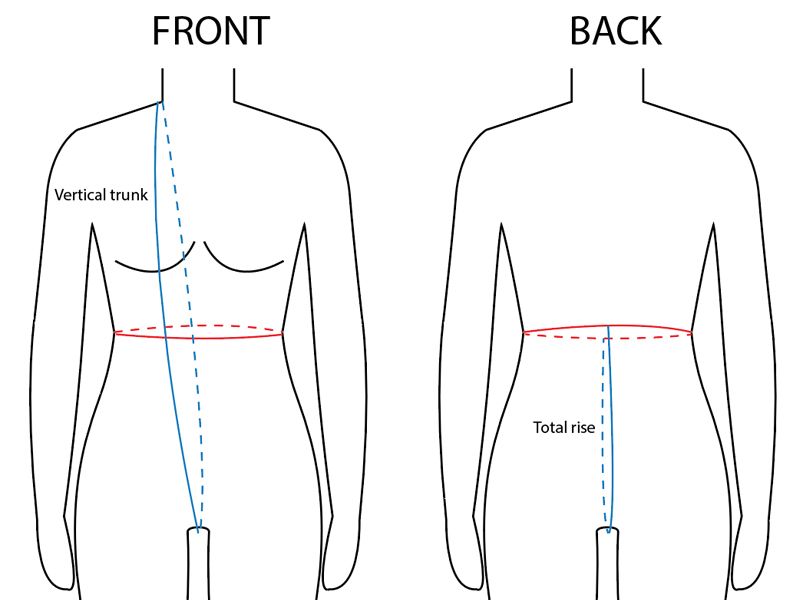
Thigh - measured around the fullest part of the thigh. Typically 1-2" below the hip joint.
Inseam - measured from the crotch to the floor along the inner leg.
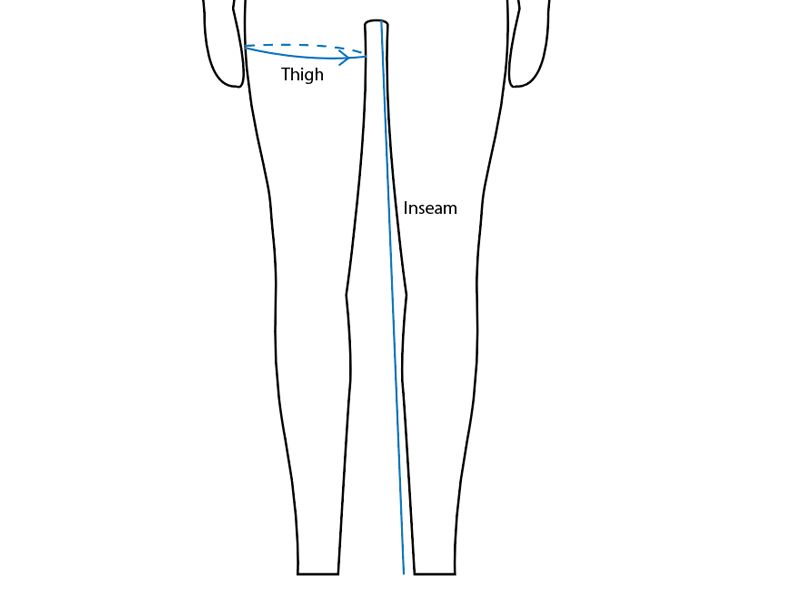
What are Secondary Body Measurements?
Secondary body measurements are even so important to design making and even more important to grading your pattern afterward on, so information technology'due south important to exist familiar with them. Just like with the Key measurements, they vary depending on the type of garment you want to make a blueprint for. The reason for this is that you wouldn't necessarily need to take a bust cup measurement if you're making pants, but you'd certainly demand to to make a bra.
Tops and Dresses
- Underbust
- Waist
- Neck Base
- Beyond Dorsum
- Across Front
- Shoulder Length
- Arm Length from CB Neck to Wrist
- Arm Length from Shoulder Betoken to Wrist
- Bicep Circumference
- Elbow Circumference
- Forearm Circumference
- Wrist Circumference
Bras or Swim Tops
- Front Bust
- Apex to Apex
- Cup width
- Cup Depth
- Apex to Underbust
- Underbust
Bottoms
- Knee Circumference
- Calf Circumference
- Talocrural joint Circumference
- Inseam
- Outseam
How to Take Secondary Body Measurements.
Underbust - full circumference measured effectually the rib muzzle just under the breast fold.
Apex to Apex - measured from apex point to apex indicate with measuring tape parallel to the floor.
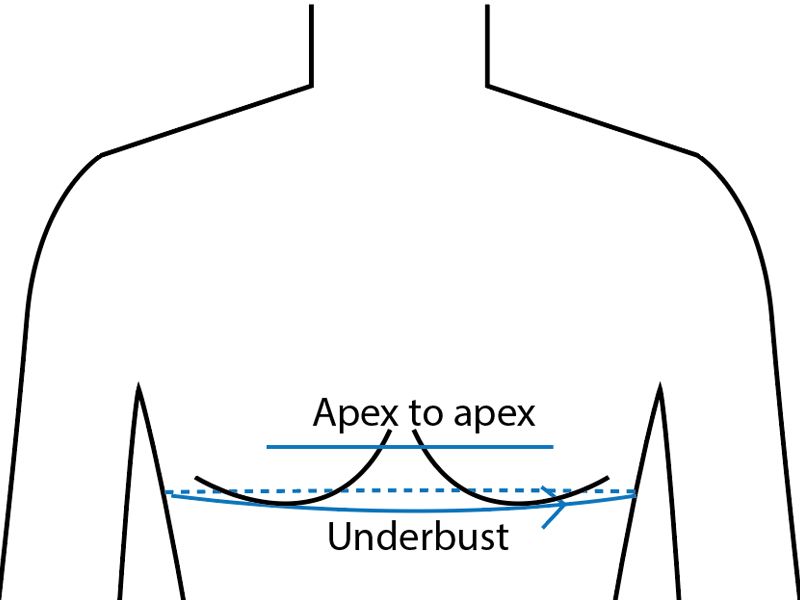
Forepart Bust - measured from the natural side of the body, around the apex points to the other side of the body.
Apex to Underbust - measured from apex point to the breast fold.
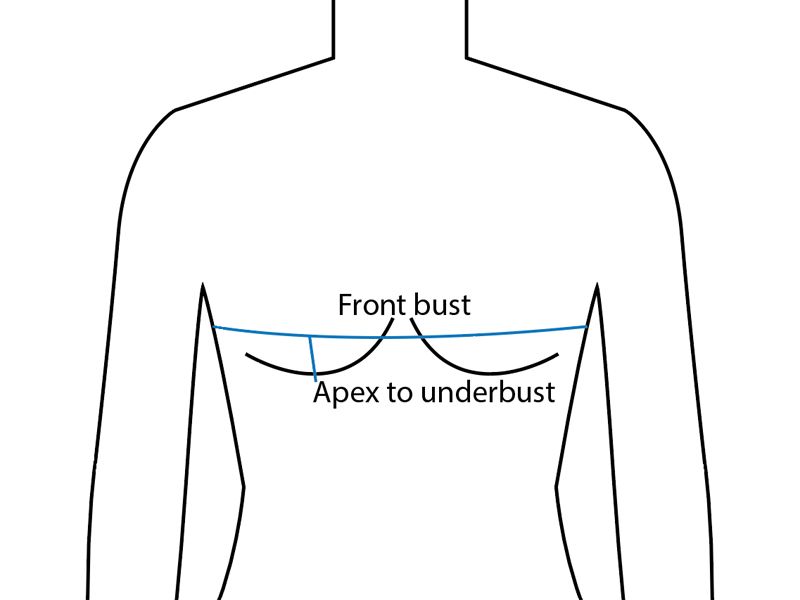
Cup width - measured from outside of the breast to within of the breast along apex.
Loving cup Depth - measured from the acme of the breast to the breast fold, along apex.
Neck Base - circumference of neck measured along the lower part of the cervix.
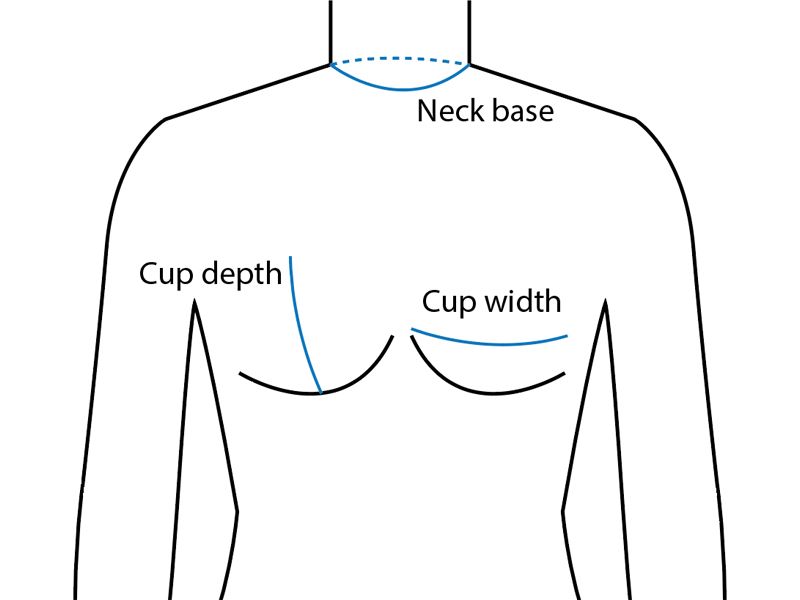
Shoulder Length - measure from HPS to shoulder socket.
Arm Length from CB Neck to Wrist - measured from CB neck (C7 vertebrae) around shoulder, downwardly outer edge of arm, to wrist. The arms should exist slightly aptitude.
Arm Length from Shoulder Point to Wrist - measured from shoulder socket, down outer edge of arm, to wrist. The arms should be slightly aptitude.
Bicep Circumference - measured at the fullest office of the bicep.
Elbow Circumference - measured at the elbow point.
Forearm Circumference - measured at the fullest office of the forearm.
Wrist Circumference - measured at the bony wrist protrusion.
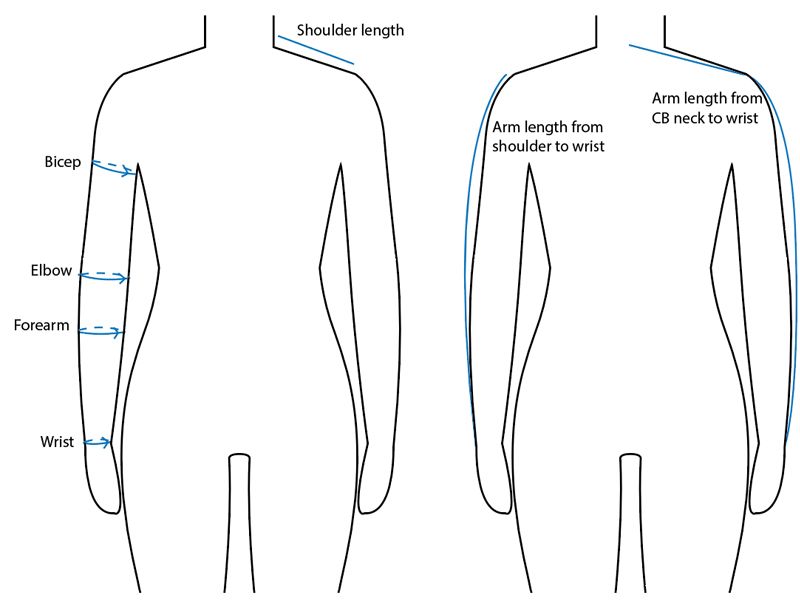
Knee Circumference - measured around the articulatio genus cap.
Calf Circumference - measured at the fullest function of the calf.
Ankle Circumference - measured at the bony protrusion at the ankle.
Outseam - measured from natural waist to floor at side of body.
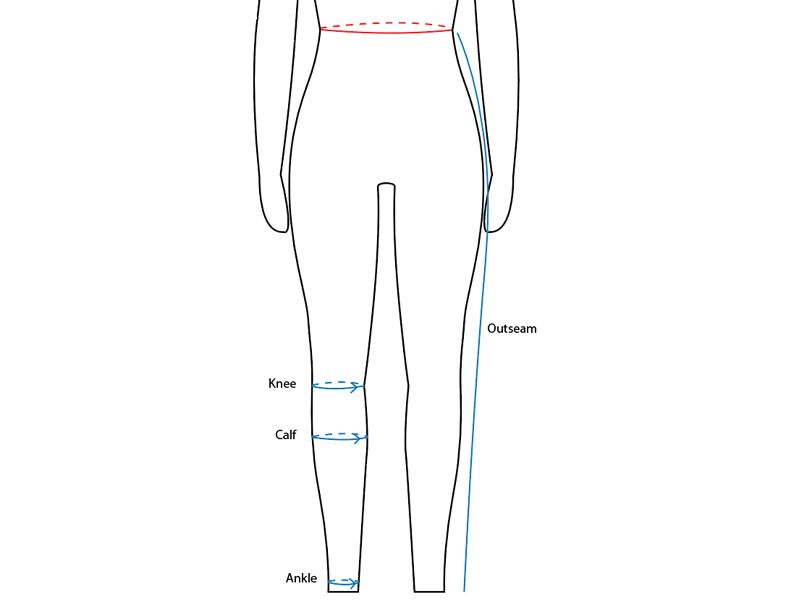
What Do You lot Do With These Measurements?
One time yous have these measurements, you'll create your patterns based on the overall design and fit intention. Nosotros'll get over exactly how to do that in a split post.
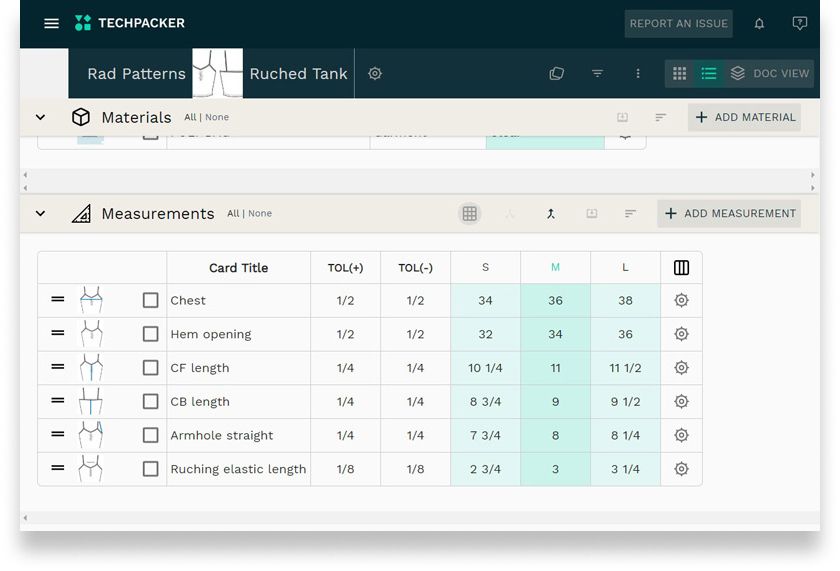
In addition to your base size measurements, you'll want to have, or buy, measurements for all of the remaining sizes you want to include in your production range. Yous will need the body measurements of all sizes in society to create graded patterns, or patterns in all sizes.
Source: https://techpacker.com/blog/design/what-are-body-measurements/

0 Response to "How To Measure High Point Shoulder"
Post a Comment